Many snakes are elusive, thus being excellent at hiding from predators! Others rely on warning signals, biting, and constriction to fend off predators. Sometimes, however, they aren’t as lucky, especially if the enemy is a bird.
Yes, you’ve heard it! Some bird species are excellent snake hunters! Although not all species listed below dare kill large snakes, most have no issues taking down small specimens!
As such, keep reading if you want to learn what birds are experts at killing snakes and whether they have any hunting techniques specialized in killing them!
10 Birds Species That Eat Snakes
1. Red-Tailed Hawks
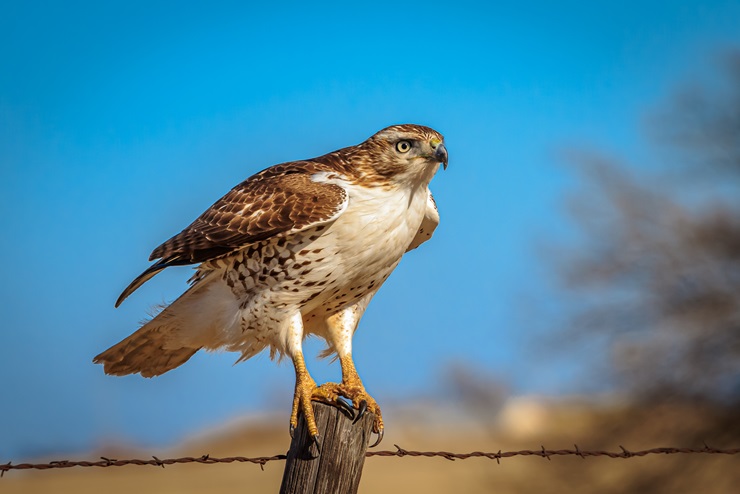
- Scientific name: Buteo jamaicensis
- Size: 45–65 cm (18–26 in)
- Weight: 690–1,600 g (1.5–3.5 lb)
- Wingspan: 110–141 cm (43–55 in)
The red-tailed hawk is a species in the Buteo genus of birds of prey. By far the most known hawk, it is also one of North America’s most widespread hawk species. If you live in the United States, you might have heard of it under the nickname “chickenhawk.”
These large birds are typically found in all types of habitats, starting from deserts and grasslands and ending with agricultural fields and even urban areas. However, if they were to choose, they’d settle in open woodlands or on woodland edges. Besides, they are partial migrants and have a wide range of distribution across the Americas.
Naturally, red-tailed hawks are carnivores and will eat almost anything they stumble upon, although studies show that most of their diets consist of small mammals.
However, since they’re opportunistic feeders, they’ll also eat reptiles, fish, birds, and amphibians. It has been demonstrated that, when rodents aren’t abundant, these hawks will start feeding on snakes primarily, regularly on reptiles, the most common prey being the gopher snake.
While they tend to avoid venomous snakes, hawks will still feed on them if they consider they stand a chance at catching them without being bitten.
2. Short-toed Snake Eagles
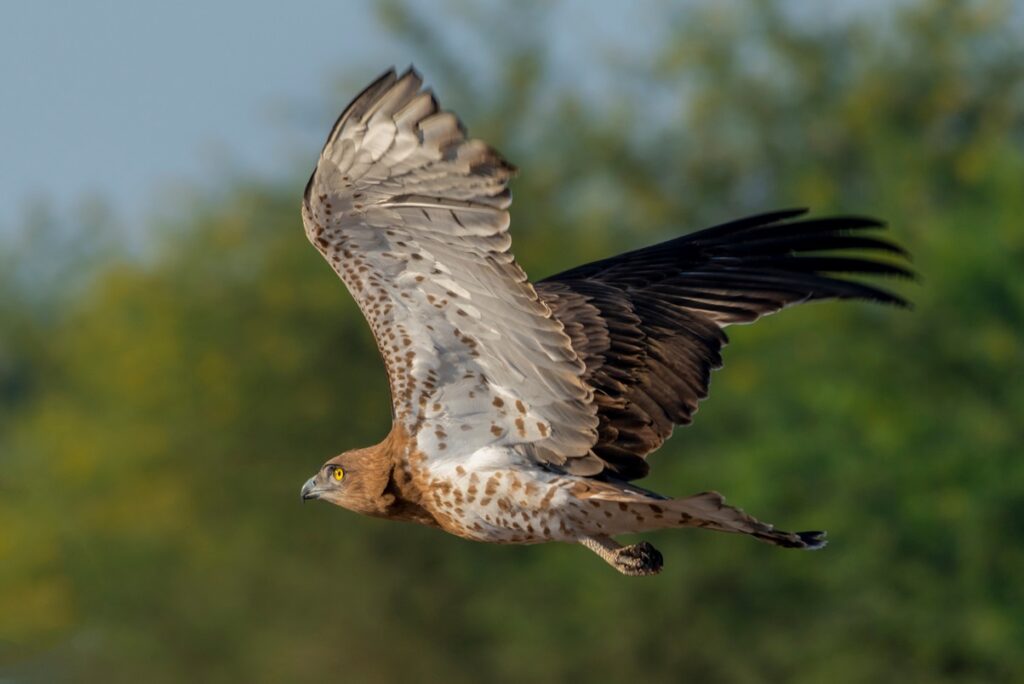
- Scientific name: Circaetus gallicus
- Size: 59–70 cm (23–28 in)
- Weight: 1.2–2.3 kg (2.6–5.1 lb)
- Wingspan: 162 to 195 cm (63.7–76.7 in)
As its name suggests, the short-toed snake eagle is among the few eagle species that feed primarily on snakes.
These birds live in semi-desert areas, open cultivated plains, and deciduous scrub areas and usually build their nests on trees. Some are year-round residents within their range, while others are migratory.
They’re most common in Eurasia and Africa, and their range extends as far as the Indian Subcontinent and the islands of Indonesia.
While they will occasionally prey on lizards, birds, and large insects, too, the short-toed snake eagle prefers hunting and killing snakes. They’ve even been observed confronting large snakes on the ground!
3. Laughing Falcons
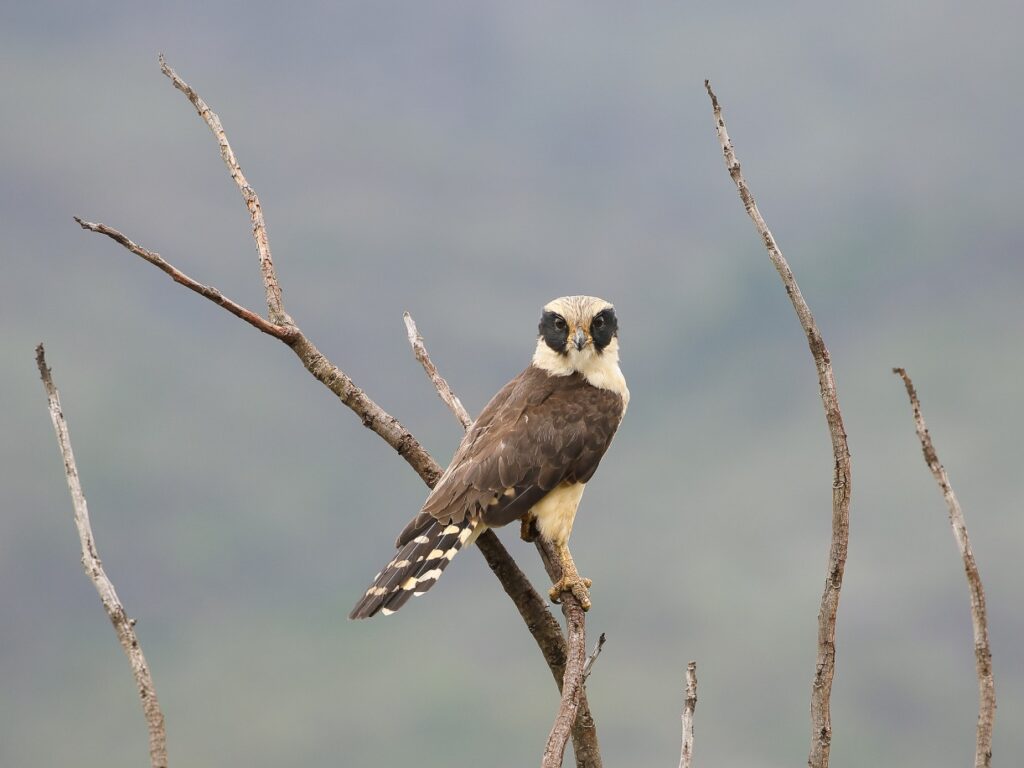
- Scientific name: Herpetotheres cachinnans
- Size: 45–56 cm (18–22 in)
- Weight: 408–800 g (0.9–1.8 lb)
- Wingspan: 79–94 cm (31–37 in)
The laughing falcon is part of the Falconidae family and is a common bird in Central America and South America.
Within its range, the laughing falcon prefers living in primary evergreen and deciduous forests. However, it’s also found in palm groves, savannas, and other open areas. Interestingly, the bird’s common name comes from its loud voice and distinctive song.
Laughing falcons prey primarily on snakes. Although smaller than the other species on our list, they’re experts at hunting snakes!
Even more, they won’t even refuse a venomous snake meal! These birds have been spotted preying on coral snakes!
Sometimes they even carry multiple snakes to a perch to eat them, having been observed flying with small snakes in their bills and large snakes in their feet!
Besides snakes, laughing falcons eat lizards, bats, rodents, and occasionally birds and invertebrates.
4. Great Horned Owls

- Scientific name: Bubo virginianus
- Size: 43–64 cm (17–25 in)
- Weight: 1.2–1.6 kg (2.7–3.6 lb)
- Wingspan: 91–153 cm (35.8–60 in)
Great-horned owls are often called tiger owls or hoot owls. They’re native to the Americas, being widely spread across the two continents, although it’s most common in North America.
Since they’re highly adaptable and aren’t too picky, great-horned owls can be spotted in almost any habitat. They’re nocturnal, meaning that they hunt and feed during the night.
These owls are considered opportunistic feeders that eat almost anything they stumble upon, except for large mammals. It’s considered the only American raptor with such an extensive range of prey, being known to feed on over 500 animal species.
The most preferred food sources are mammals, followed by birds, insects, reptiles, and amphibians. Since many snake species are either partially or completely nocturnal, great-horned owls occasionally hunt them down. They’re known to hunt and feed on garter snakes, night snakes, and even venomous snakes like prairie rattlesnakes.
Great-horned owls are such good hunters that they can easily kill the well-known large common king snakes and black rat snakes, which can reach lengths of 250 cm (98.4 in)!
5. Greater Roadrunners
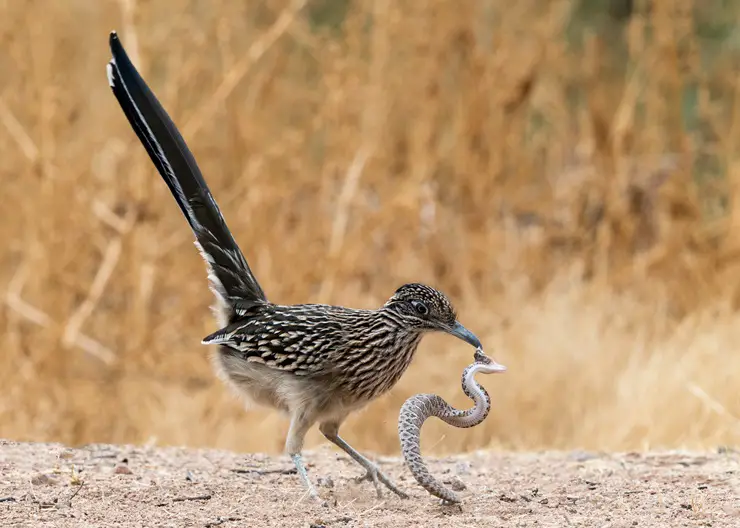
- Scientific name: Geococcyx californianus
- Size: 52–62 cm (20–24 in)
- Weight: 221–538 g (7.8–19.0 oz)
- Wingspan: 43–61 cm (17–24 in)
The greater roadrunner is a cuckoo species in the Cuculidae family. Its scientific name, Geococcyx californianus, translates as Californian earth-cuckoo. Besides this, the species is also called the snake killer – for obvious reasons!
These roadrunners are endemic to the southwestern United States and northern Mexico, where they live in arid and semiarid scrublands and build their nests low in bushes or cacti. They are year-round residents.
Great roadrunners are experts at hunting down, catching, and killing small snakes. They won’t even hide from venomous snakes and will attack them with all the skills they’ve got!
These birds are known to kill small rattlesnakes, but the most interesting thing about this is how exactly great roadrunners do this!
As it turns out, they’re highly intelligent creatures and have been spotted gathering cactus pieces and placing them around the snake, thus making it impossible for it to escape!
Besides snakes, these birds eat insects, spiders, scorpions, and even small birds.
6. Great Blue Herons
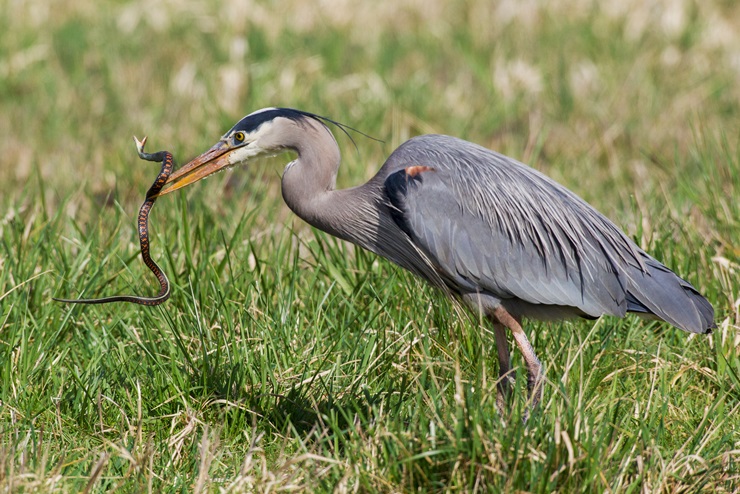
- Scientific name: Ardea herodias
- Size: 91–137 cm (36–54 in)
- Weight: 1.82–3.6 kg (4.0–7.9 lb)
- Wingspan: 167–201 cm (66–79 in)
Being much larger than other birds on our list, it’s no wonder great blue herons can easily hunt and kill snakes!
The species is native to the Americas, being more common in North and Central America. Some populations are year-round residents, while others are migratory.
Some specimens are very hardy and can withstand harsh winters as long as the food isn’t scarce, especially fish prey. As such, you’ve probably already guessed that great blue herons are commonly found in aquatic habitats – marshes, flooded meadows, mangrove swamps, and shorelines.
Naturally, these birds feed primarily on fish. However, they’re often regarded as opportunistic feeders, and if the opportunity arises, great blue herons will eat turtles, lizards, salamanders, frogs, grasshoppers, and snakes, to name a few.
They’ve been observed taking on large snakes and even water snakes, which can reach lengths of up to one meter (3.2 ft)!
7. Chickens
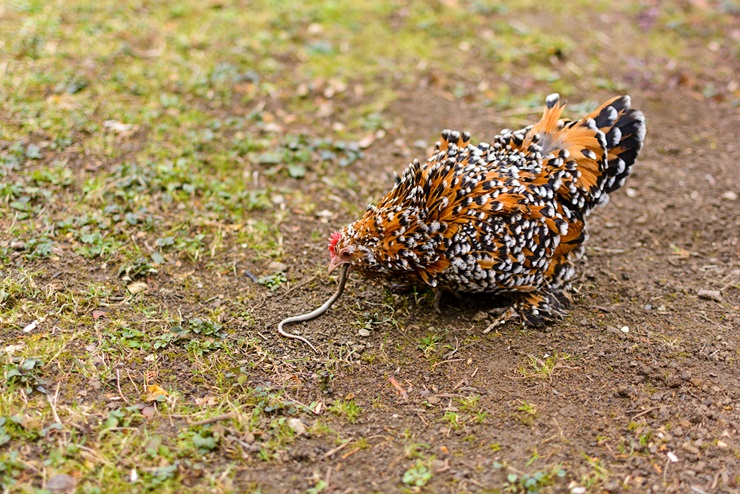
- Scientific name: Gallus gallus domesticus
- Size: 50–63 cm (20–25 in) tall
- Weight: 2.5–4.5 kg (5.7–9.9 lb)
- Wingspan: 60–90 cm (23.6–35.4 in)
The chicken is a domesticated species of junglefowl. While they’re commonly reared as sources of meat and eggs, few people know that chickens come from southern Asia and represent a hybrid between the red junglefowl, a tropical bird, and other junglefowl species, all native to South and Southeast Asia.
As such, if you’ve ever visited a farm or are a farmer yourself, you probably already know that chickens can take down a snake if they stumble upon one. However, chickens won’t typically attack a large snake.
If any of your chickens ate a snake, there’s no need to worry, as it will likely cause them no harm! Nevertheless, it’s advisable to regularly check the surroundings for venomous snakes, as they may harm your chickens if they’re attacked.
8. Wild Turkeys
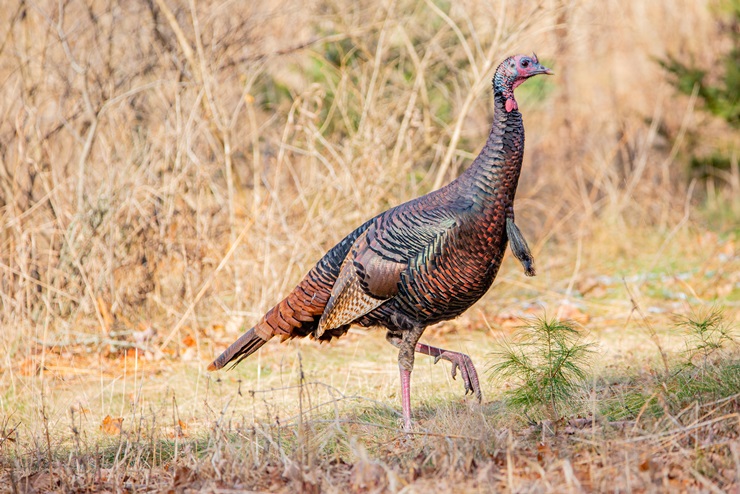
- Scientific name: Meleagris gallopavo
- Size: 76–125 cm (30–49 in)
- Weight: 2.5–11 kg (5.5–24 lb)
- Wingspan: 125–144 cm (49–56.6 in)
The wild turkey is a game bird native to the North American continent. It is now widely distributed across the eastern and central United States, with some populations in the westernmost part of the country. They’re also found in Mexico.
The species isn’t migratory and usually spends its winters on conifer tree branches, hiding from blizzards.
Wild turkeys are omnivorous birds that feed primarily on acorns, nuts, berries, and insects. They occasionally eat amphibians and small reptiles, even small snakes.
Since they have good eyesight, we can assume they often go for snakes as prey. However, if a wild turkey hunts alone, it will likely choose smaller snakes.
On the other hand, if wild turkeys hunt in groups, they might be able to take down longer snakes as well! The interesting thing about these birds is that they’re also sometimes preyed upon by snakes, so it may be that they sometimes feed on snakes if they win in a confrontation.
9. Indian Peafowls
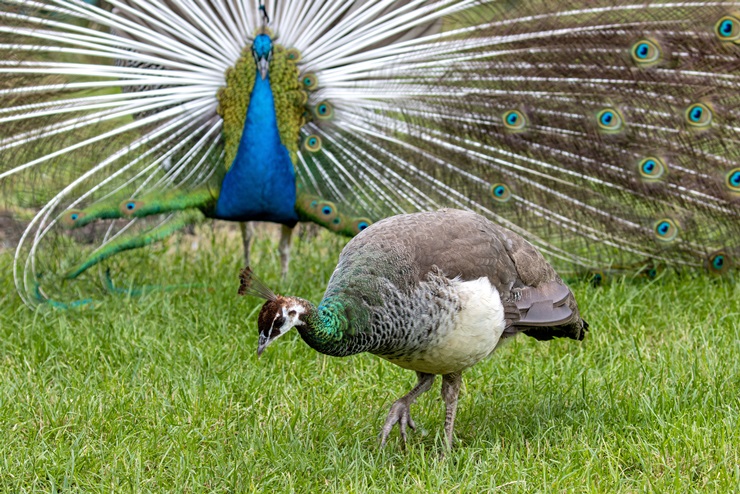
- Scientific name: Pavo cristatus
- Size: 100–115 cm (39–45 in)
- Weight: 4–6 kg (8.8–13.2 lb)
The famous peafowl and its renowned, colorful train! Can you imagine that these elegant creatures are capable of taking down mammals and reptiles, including snakes?!
As its name suggests, the Indian peafowl is native to the Indian subcontinent, commonly found in Sri Lanka, in its dry lowland areas. It breeds across the subcontinent, where it’s spotted in dry-deciduous forests, cultivated regions, and urban areas.
These stunning birds are omnivorous, and their diet consists primarily of seeds, worms, fruits, and insects. They occasionally prey on small mammals and frogs.
Besides this, they may hunt and kill snakes, but they’re known to stay away from larger ones. It’s not surprising, since they’re not specialized in hunting these elusive reptiles!
10. Secretary birds

- Scientific name: Sagittarius serpentarius
- Size: 1.1–1.5 m (3.6–4.9 ft)
- Weight: 3.74–4.27 kg (8.2–9.4 lb)
- Wingspan: 1.9–2.1 m (6.2–6.9 ft)
Secretary birds are birds of prey native to Africa, where they live in savannas and open grasslands. During the breeding season, secretary birds build their nests on thorny trees, usually at the top.
As you’ve probably noticed, the specific name serpentarius, gives us a hint that the species is a snake eater. Not only does it point to its diet, but also bears symbolic meaning, as it is regarded as South Africa’s protector against enemies!
However, recent studies show that their tendency to kill and eat snakes has been historically exaggerated. Still, this doesn’t mean they can’t and won’t take down a snake if the opportunity arises. They’re even known to kill venomous species like cobras and adders!
There’s an interesting theory concerning their hunting technique – upon catching a snake, secretary birds will fly with it in their bills and then drop the snake to its death!
Other more plausible theories suggest that they stomp the snakes until they die or are immobilized, then delight in their meal!

I love to hike at a local state park located in Nashville. TN. We have watched a Barred Owl eat a rather large snake. Swallowed it like a spaghetti noodle!